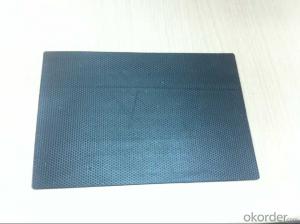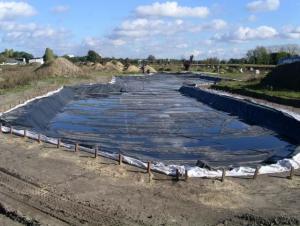EPDM roof /pond/basement waterproof membrane manufacturer
- Loading Port:
- Qingdao
- Payment Terms:
- TT or LC
- Min Order Qty:
- 1000 m²
- Supply Capability:
- 100000 m²/month
OKorder Service Pledge
OKorder Financial Service
You Might Also Like
EPDM Coiled Rubber Waterproof Membrane for Ponds
Description Of EPDM Rubber Waterproof Membrane:
1. EPDM waterproof membrane is made from ternary ethylene-propylene rubber, which is for waterproofing of exposed and non-exposed applications.
2. EPDM waterproof membrane production adopts the world-advanced equipment of cold feeding extrusion and continuous vulcanization technology.
3. EPDM waterproof membrane is of high elasticity among high polymer waterproof materials and becomes a world-popular waterproofing material.
Main Features of EPDM Rubber Waterproof Membrane:
1. Excellent physical and mechanical performance
2. High tearing resistance
3. Good deformation adaptability
4. High puncture resistance
5. High aging resistance
6. UV resistance
Specifications of EPDM Rubber Waterproof Membrane:
Material | EPDM Rubber |
Size | 1.2m (width)*20m (length) or customized, weldable type 2.05m or 4m width |
Thick | 1.2mm, 1.5mm, 2.0mm |
Type | Vulcanized & Weldable |
Pattern | Non-reinforced (homogeneous) |
Certificate | ISO9001/14001 |
Applications of EPDM Rubber Waterproof Membrane:
1.Roofs, Basement, Toilets
2. Industrial and civil building waterproofing
3. Geosynthetic liner for swimming pool, channels, irrigation system
4. Especially suitable for projects with high requirements in durability, anti-corrosion and deformation.
IMages of EPDM Rubber Waterproof Membrane:
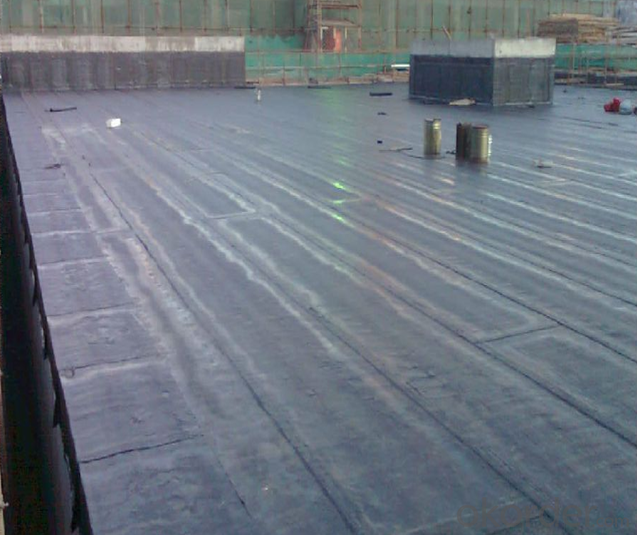
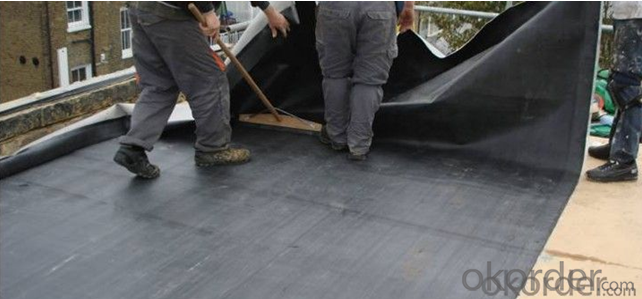
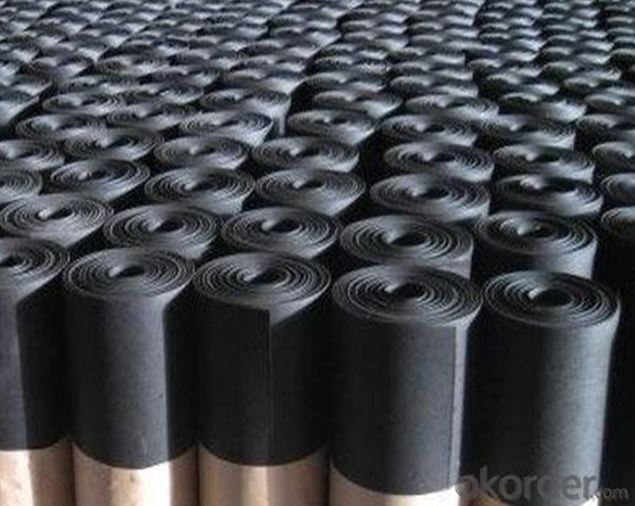
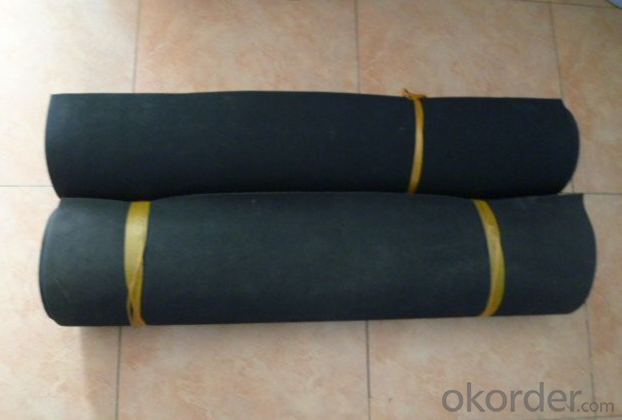
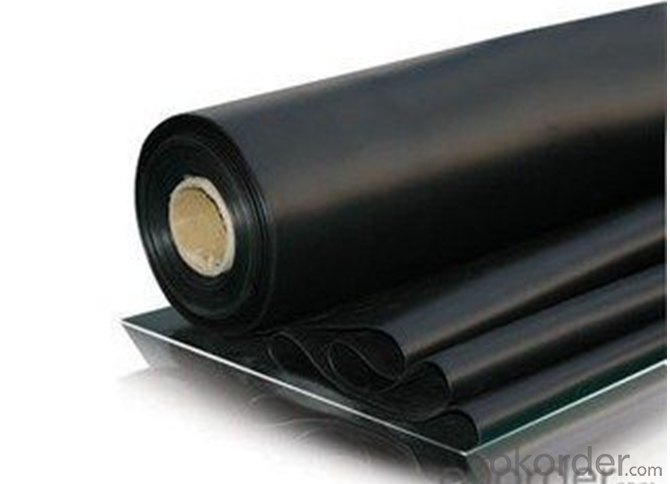
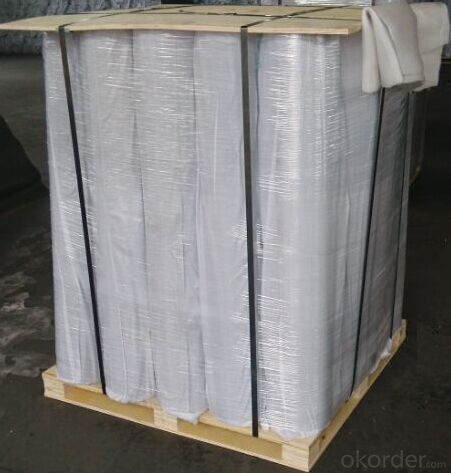
FAQ:
1. What are we supplying?
We are specialized in producing Colorful Asphalt Roof Shingle, SBS/APP modified bitumen waterproof membrane, Self adhesive bitumen waterproof membrane, PVC waterproofing membrane, EPDM rubber roofing membrane, Single Component Polyurethane Waterproof Coating, and Spray Polyurea Waterproof Coating
.
2. How Many years experience do we have?
We have been exported to more than 20 countries in the past 15 years.
3. How long do we usually reply your request?
We always reply our customer within 24 hours.
- Q:Does a waterproofing membrane require a protective layer?
- Yes, a waterproofing membrane typically requires a protective layer. The protective layer serves multiple purposes. Firstly, it helps to prevent damage to the waterproofing membrane during and after installation. It acts as a barrier against sharp objects, construction debris, and potential punctures. Additionally, the protective layer helps to distribute loads evenly and provide stability to the membrane, reducing the risk of damage caused by foot traffic or heavy equipment. Furthermore, the protective layer serves as a UV barrier, shielding the waterproofing membrane from the harmful effects of sunlight exposure. UV rays can degrade the membrane over time, leading to reduced effectiveness and potential leaks. The protective layer also helps to regulate temperature fluctuations, which can expand and contract the membrane, causing stress and compromising its waterproofing capabilities. In summary, a protective layer is essential for the longevity and performance of a waterproofing membrane. It safeguards against physical damage, UV radiation, and temperature fluctuations, ensuring the membrane's effectiveness in keeping water out and preserving the integrity of the structure it protects.
- Q:Can waterproofing membranes be used on concrete tunnels?
- Concrete tunnels can benefit from the use of waterproofing membranes. These membranes are commonly employed to prevent water infiltration in various structures, including concrete tunnels. They are applied on the outside of the tunnel walls and can be made from different materials like bitumen, PVC, or EPDM. Their purpose is to stop water from seeping through the concrete. By creating a waterproof layer, these membranes safeguard the tunnel against water damage, such as corrosion, decay, and leaks. Moreover, they act as a protective shield against other sources of moisture, like groundwater or surface water. It is crucial to select a suitable waterproofing membrane that matches the specific conditions and requirements of the concrete tunnel, taking into consideration factors such as water pressure, chemical exposure, and temperature changes. To ensure the effectiveness and long-term durability of the waterproofing membrane in safeguarding the concrete tunnel from water ingress, proper installation and regular maintenance are essential.
- Q:How does a waterproofing membrane handle movement joints or cracks?
- To handle movement joints or cracks, a waterproofing membrane is designed with flexibility and stretchability, serving as a barrier that can adapt to the shifting or settling of a structure. When there are movement joints or cracks, the membrane is applied to create a continuous and seamless layer on the surface. The waterproofing membrane's flexibility allows it to adjust to structural changes without compromising its integrity, such as expansion or contraction. This is particularly crucial in areas with significant movement or prone to crack development, like concrete slabs or foundations. In cases of movement joints, the membrane is typically terminated or divided at the joint, ensuring movement can occur without stressing or tensioning the membrane. This prevents tearing or failure caused by structural shifts. For cracks, the waterproofing membrane is directly applied over the surface, bridging the gap and sealing it off from water infiltration. Its flexibility allows it to stretch and conform to the crack's shape, effectively sealing it and preventing further water damage. Ultimately, a waterproofing membrane provides a durable and flexible barrier capable of accommodating structural movements and preventing water penetration. This safeguards the structure's integrity and shields it from water damage.
- Q:Can waterproofing membranes be used on outdoor patios?
- Yes, waterproofing membranes can be used on outdoor patios. They are an effective way to protect the patio from water damage and can help to prevent leaks and moisture penetration. Waterproofing membranes create a barrier between the patio surface and water, keeping it dry and extending its lifespan.
- Q:Are waterproofing membranes effective in preventing water damage?
- Waterproofing membranes prove highly efficient in the prevention of water damage. Crafted with the intention of creating a barrier that hinders the infiltration of water and the penetration of moisture into surfaces like roofs, basements, and foundations, these membranes significantly reduce the risk of water damage arising from leaks, seepage, or condensation. Typically composed of durable materials such as rubber, PVC, or bitumen, waterproofing membranes possess a high resistance to water and moisture. Various application methods, including spraying, rolling, or adhering with a special adhesive, ensure these membranes secure surfaces with a seamless and watertight seal, effectively blocking the seepage of water. Furthermore, waterproofing membranes offer additional advantages beyond their water damage prevention capabilities. They contribute to enhanced energy efficiency by reducing heat loss or gain and safeguard against the growth of mold and mildew. Moreover, these membranes extend the lifespan of protected surfaces by countering water-related deterioration, such as corrosion or rot. It is crucial to acknowledge that the efficacy of waterproofing membranes relies on proper installation and regular maintenance. Any flaws or damage in the membrane can compromise its ability to prevent water damage. Therefore, engaging professional contractors experienced in waterproofing is essential to guarantee correct application and regular inspection for signs of wear or damage. Overall, waterproofing membranes represent a dependable and efficient solution for averting water damage. They offer a long-lasting and sturdy defense against water infiltration, preserving the structural integrity of buildings and avoiding costly repairs stemming from water-related issues.
- Q:Can a waterproofing membrane be used in bathrooms?
- Indeed, bathrooms can benefit greatly from the utilization of a waterproofing membrane. It is strongly advised to employ such a membrane in bathrooms as a preventive measure against water-related harm and leakage. Typically, this membrane is applied to both the walls and floors, establishing a protective barrier that inhibits water infiltration, subsequently averting structural deterioration or the proliferation of mold. This is particularly crucial in areas of heightened water exposure, such as showers and the vicinity of bathtubs. These waterproofing membranes are engineered to endure moisture and offer enduring safeguarding, thereby assuring the soundness of the bathroom and prolonging its longevity.
- Q:Are waterproofing membranes resistant to sulfuric acid exposure?
- Waterproofing membranes typically do not possess resistance against sulfuric acid exposure. Sulfuric acid, being an immensely corrosive substance, has the potential to inflict substantial harm to various materials, including waterproofing membranes. The membrane's deterioration can occur as a result of sulfuric acid's highly acidic properties, ultimately causing its failure. Hence, if there exists a chance of sulfuric acid exposure, it becomes crucial to employ materials that are explicitly engineered to endure such corrosive substances.
- Q:Are waterproofing membranes suitable for residential basements?
- Yes, waterproofing membranes are suitable for residential basements. These membranes are designed to prevent water infiltration and protect the basement against moisture damage. They create a barrier that keeps water out, helping to keep the basement dry and free from water-related issues like mold and water damage.
- Q:Can waterproofing membranes be used on buried pipelines?
- Yes, waterproofing membranes can be used on buried pipelines. Waterproofing membranes are designed to provide a protective barrier against water and moisture, and they can be applied to various surfaces, including buried pipelines. The membranes are typically made of materials such as bitumen or synthetic polymers, which are resistant to water penetration. When applied to buried pipelines, waterproofing membranes help prevent water infiltration, which can cause corrosion and deterioration of the pipeline material. They act as a barrier, preventing water from reaching the pipeline's surface and protecting it from potential damage caused by moisture. Additionally, waterproofing membranes also offer protection against other external factors, such as soil chemicals or gases, which can potentially cause harm to the pipeline. By creating a waterproof barrier, the membranes help extend the lifespan of buried pipelines, reduce maintenance costs, and improve overall performance. It is important to note that the selection and application of waterproofing membranes should be carried out by professionals who are knowledgeable in pipeline construction and waterproofing systems. Proper installation techniques and compatibility with the pipeline material are crucial to ensure the effectiveness of the waterproofing membranes.
- Q:Can a waterproofing membrane be used on concrete tanks?
- Concrete tanks can indeed benefit from the use of a waterproofing membrane. The primary purpose of this membrane is to create a barrier that prevents water from penetrating through. It is specifically designed to be applied on various surfaces, including concrete. Waterproofing membranes are especially useful for concrete tanks that are used for water storage or containment. By applying the membrane on the concrete surface, a protective layer is formed that effectively stops water from entering or exiting the tank. This is crucial for maintaining the tank's structural integrity and avoiding any potential damage or contamination caused by water leakage. Furthermore, these membranes also offer protection against other substances that may be present in the tank, such as chemicals or pollutants. It is important to choose the right type of membrane that suits the specific requirements of the concrete tank. Following the manufacturer's instructions for application is also essential to ensure that the waterproofing is effective and long-lasting.
1. Manufacturer Overview |
|
|---|---|
| Location | |
| Year Established | |
| Annual Output Value | |
| Main Markets | |
| Company Certifications | |
2. Manufacturer Certificates |
|
|---|---|
| a) Certification Name | |
| Range | |
| Reference | |
| Validity Period | |
3. Manufacturer Capability |
|
|---|---|
| a)Trade Capacity | |
| Nearest Port | |
| Export Percentage | |
| No.of Employees in Trade Department | |
| Language Spoken: | |
| b)Factory Information | |
| Factory Size: | |
| No. of Production Lines | |
| Contract Manufacturing | |
| Product Price Range | |
Send your message to us
EPDM roof /pond/basement waterproof membrane manufacturer
- Loading Port:
- Qingdao
- Payment Terms:
- TT or LC
- Min Order Qty:
- 1000 m²
- Supply Capability:
- 100000 m²/month
OKorder Service Pledge
OKorder Financial Service
Similar products
New products
Hot products
Hot Searches
Related keywords
